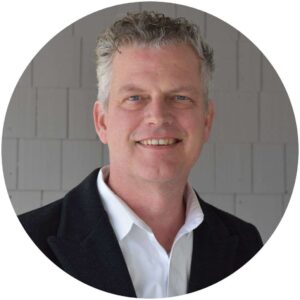Social sector professionals often describe their career path as a calling. Whether born out of lived experience, empathy, or the simple desire to be of service to others, passion tends to be the driving force that unites nonprofit and government professionals and their mission-driven organizations. And it is passion that fuels seemingly Herculean feats, even in the face of challenging circumstances and limited resources.
This work is incredibly difficult. It is mentally, physically and emotionally draining, and the toll it takes can leave even the most resilient warriors-for-good feeling completely depleted. From the varying degrees of bureaucracy and meeting the demands of funders and other stakeholders, to even the burden that comes with the knowledge that the needs of so many are going unmet, how could this passion not become stymied in the face of all of these constraints? Even as social sector leaders tackle their organizations’ challenges through the lens of their business models, and overlaying these constraints, passion can become decoupled from what nonprofits have historically coveted as their hallmark—the double-bottom line (or the triple-bottom line for Certified B Corps).
Over time, the result of this dynamic simply can’t produce anything but burnout. So how can your organization manufacture the resilience it needs to combat burnout, while keeping passion as a central tenet? The trifecta of high-performance measurement tools—Logic Models, Impact Measurement Frameworks and Strategic Planning—serve not only as the foundational supports that organizations need operationally, but they also act as expressions of the collective passion that your staff brings to this work. And seeing real, tangible outcomes that are aligned with this passion is what will energize and sustain your workforce, because it is for them a constant reminder of why they answered this calling in the first place.
1. Lock in Your Logic Model.
At its core, a logic model summarizes a program’s whys, whats, and hows on a single sheet of paper. This powerful tool links organizational resources (inputs) to what it does (activities and outputs), to who it desires to impact (participants and audiences), and to what it hopes to achieve or change (outcomes). Outcomes articulate your mission on a more granular or individual level, so it’s important to understand how your organization goes about accomplishing them. If you need more convincing, check out our previous blog, Five Reasons Your Organization Needs a Logic Model.
2. Invest in a Current State Report, Visioning & Strategic Planning.
Understanding your organization’s current state and the external forces at work will root your organization in a common understanding of the barriers and constraints (as well as the opportunities) prior to engaging in visioning and strategic planning. Visioning sets aside those barriers and constraints for a moment, and focuses solely on the organization’s aspirational future state. Finally, strategic planning is the compass that will help you navigate through the barriers and constraints transporting your organization from its current state to its aspirational future state.
3. Focus on Your Impact Measurement Framework.
Identifying the right measures to track your organization’s progress over time helps social sector teams see the positive impact of the grueling work they do. And in the cases where things change for the worse, having the right measures and integrating routine performance reviews of this data into your culture will allow your organization to troubleshoot issues, and redirect resources to get back on track as quickly as possible. Impact Measurement Frameworks, by nature empower social sector teams to use data to drive continuous improvement, which connects their individual contributions to the organization’s outcomes.
Take the First Step to Eliminate Social Sector Burnout Today.
Regardless of where your organization is on the continuum of high-performance culture, Measurement Resources is here to help. Contact us today to learn more about our services, and how we might partner with you to help reignite your team’s passion for the impact you are making in your community.





